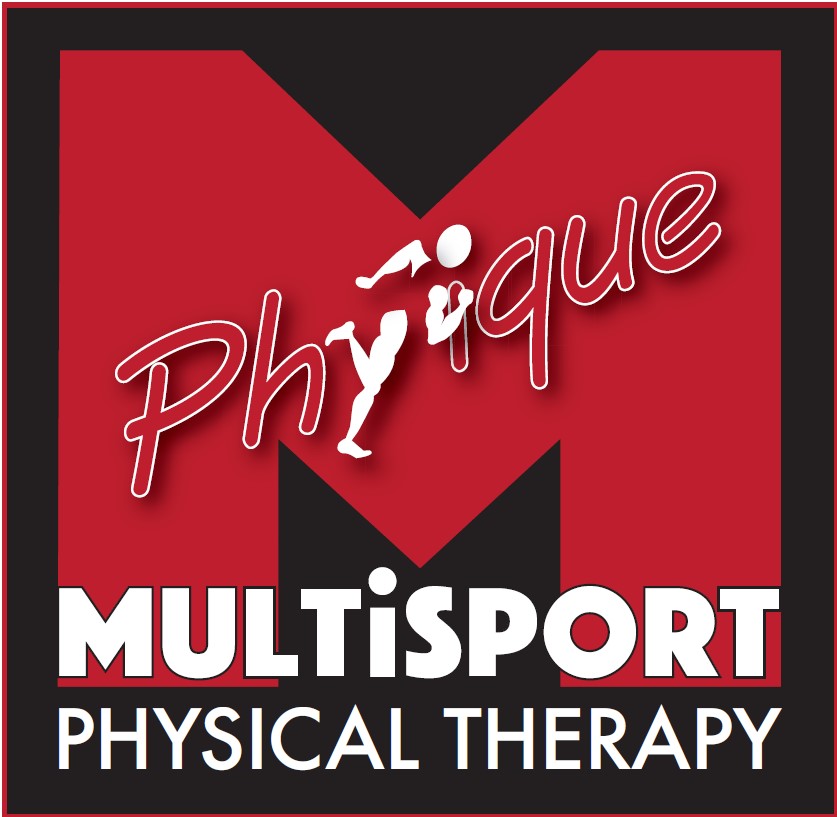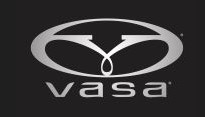Rachel Gordon Wills
TCSD Conversation by Craig Zelent
Rachel (Gordon) Wills is one of the fastest swimming triathletes on the planet. Rachel has been a huge help to many of our members through her swim coaching and her work at Moment Bicycles. We are lucky to have this Fighting Sioux as one of our club members and friends.
Craig: What sports did you do before triathlon?
Rachel: Like most kids from small Midwestern towns, I had the opportunity to try many sports. I soon found I was neither tall enough for basketball, nor graceful enough to continue my figure skating dream, nor coordinated enough to make the softball team. Swimming was something that came naturally to me, and for that I have my parents to thank. They signed me up for water babies at 6 months old and I’ve gravitated towards the anti-gravity of water ever since. As I progressed through Red Cross swim lessons and the local YMCA team, I made the varsity high school section team as a 7th grader. I did everything to stay in the pool year round and, since we didn’t have a club team, my swimming pursuits widened to synchronized swimming, which I did until I graduated. The high school swim season started in the fall, YMCA over the winter, synchro in the spring, and summertime was about having fun on the lake. During the summer of 2001, I moved to Minneapolis to live with my uncle and train at the Uof M to get a head start into my senior season. That year I became the MN state champion and record holder in the 100 backstroke. Some of my school records are still standing, 12 years later. My open water endeavors started as a relay member in our local Olympic distance Timberman Triathlon. 2014 is the 30th year! That 1500m swim was long for me, and I remember thinking there is no way I’ll be able to run or bike following such a long distance!
Craig: How far did your swimming career progress?
Rachel: The University of North Dakota granted me a swimming scholarship, so I gave up on my dream to swim Division I in MN and became a Fighting Sioux. Looking back, I can’t believe I survived the frozen tundra, but I don’t think I would’ve graduated nor stuck with swimming had I gone to college in San Diego, where the ocean is always calling. As a freshman, I was lucky enough to be on a NCAA Division II runner up 800 yard free relay. Over the course of my four years at UND I was a 5-time All-American, multiple conference champion including the 200 yard backstroke, and school record holder in the 200 yard medley relay. After college, I got a job with Wells Fargo, moved to Minneapolis, took up rock climbing, and didn’t touch a pool for 2 years.
Craig: What prompted you to move to San Diego?
Rachel: I always say it was a random change in life. I was sick of the cold and didn’t have any financial burdens holding me back, so I asked Wells Fargo for a transfer to a San Diego branch, and in March of 2008 I made the drive across the country. It was hard to leave my family, friends, and the Midwestern “nice,” but I think my transition to life in California has gone pretty well.
Craig: You got involved in the Tri Club pretty quickly. How did that come to be?
Rachel: I bought a bike in Minnesota just before moving out to San Diego. I knew I wanted to shift gears from rock climbing to triathlon and what a perfect place to do that, here in San Diego. I found the TCSD website, joined, got my first discount to the Spring Sprint, bought my first TCSD tri shorts at the expo, and finished my first race with a smile on my face. Less than a week later I did my first TCSD race in Coronado and met Diana Black and Bethany Allen, who introduced me to Nikee Pomper. Nikee and I began swimming together and I somehow got roped into substitute coaching for the Tri Club swim program, which immediately turned into a full time gig. I’ve been volunteer coaching for the JCC TCSD swim program since the summer of 2008 and, after almost 6 years, I’m stepping down to a substitute roll again. I can actually say, I’ve enjoyed every time I’ve stepped on that pool deck. Making a difference and helping triathletes get more comfortable in the water is a very rewarding experience. I walk away from the pool each time with a smile on my face, and it’s been a hard decision to step back.
Craig: What are some of the common swim mistakes you see triathletes make?
Rachel: Most triathletes approach the freestyle technique with the arm rotation as the focal point, and drag the rest of their body along for the ride. I talk about stroke technique with a bottom up approach, to get the body working properly. The arms need all the help they can get, doing their job of gaining forward motion. When the body is in the proper position, it can help, instead of hurt, forward progress.
So ditch the arms {and all those silly toys} and work on the rest of the body, to build the stroke up properly.
Kick: Triathletes are mostly taught not to kick, however I believe otherwise. Kicking in triathlon swimming is NOT for propulsion, but to aid in body position and body rotation. That means the kick is light, and airy; not heavy and strong. It is not done with a drastic knee bend, but more of a flick from the hip flexor and a pull up with the glutes. I understand that we need our legs to ride and run, and agree, we are supposed to save them in the swim. But if your feet and legs are dragging behind, you are wasting much more precious energy and will swim much slower. More time in the water, is more energy wasted. Practice kicking on your side with the bottom arm forward and the top arm at your side. Always practice both sides to help balance out your stroke.
Core/Body Position: Great posture is important while swimming and something that is often forgotten while floating {or thrashing}. I see a lot of computer nerds with poor posture swimming/slouching like they are the saddest person alive. Stand tall, swim proud. Press your shoulders back and pull your neck long. Have tension on your core and rotate your pelvis forward. I like the core drill {often my students call it the drowning drill because it is very difficult}. Both arms at your side. Rotate from side to side, with your head facing down the entire time. Shoulders and hips are attached - no worm movements. Try to get 4 rotations before attaching your head and breathing to the side. If you do this drill every time you get in the water, even just for one length, you will become a better swimmer.
Physics: Every action has an equal and opposite reaction. Once we finally get to working on the arms, the focal point becomes where you are aiming that pressure and power. If the palm is facing down, your body will raise out of the water, wasting precious energy swimming up and down, rather than forward. Position the hand, forearm and upper arm in progression to be pushing backwards for the longest line possible. Make adjustments to the wrist to maximize the time spent pushing backwards {thus swimming forward}. However, don’t get too caught up in what the arms are doing. Make sure the core, rotation and kick are helping the arm.
Shoulder Injuries: These are most often due to the lack of hip rotation and interaction with the stroke. If you swim with just your arms, the shoulder will tire quickly. If you swim with your entire body, the core and lateral muscles will aid the arm, creating a much larger distance per stroke and a happy shoulder.
Phew - there are so many more, but I’ll end with saying come out to the JCC swims and join the technique lane - it’s not just for beginners. If you are experiencing a swim plateau {1:45/100 yard swim} it’s a technique flaw, not swim fitness that’s holding you back.
Craig: One of the unique career paths out there is to go from being a Wells Fargo banker to work in a bike shop. What led you to work at Moment Bicycles?
Rachel: When I moved to SD with my new bike, I was looking for local rides on the TCSD website. I saw that Moment Bicycles (then Moment Cycle Sport) was a Tri Club sponsor and had (still has) a Tues/Thurs Cabrillo hill repeat ride. I joined JT Lyons, Cory Osth, and the gang... and got dropped. Yet, I kept coming back. The encouraging nature of the ride, motivation from others, and the constant “come on, one more!” quickly made me stronger. After riding a bike much too big for me for too long, I ended up getting a custom made Guru tri bike (which I still have and LOVE) from Moment. JT knew my position was holding me back, got me dialed in on the old fit bike. It was during this process I realized I wanted to work at a bike shop. I wasn’t a fan of the corporate America scene (although the benefits and 20 days PTO were a great bonus!) and the “same thing, different day” aspect of my job didn’t fit my outgoing personality. Moment was looking to grow and after a couple interviews on the bike, I was hired in July of 2009.
Craig: What do you do at Moment?
Rachel: I’m a Bike Fit Kingpin, but really, I don’t know where to start with that. Everything? We’re a small business and all wear many hats. Bike fitting, sales, ordering, receiving, inventory, basic maintenance, service writing, answering phones, events, marketing, race directing... That’s what I love about this job. It is a different thing on every different day.
Craig: What does Moment do different and better than other bike shops?
Rachel: We are a fit first bike shop. I think triathletes and cyclists struggle to differentiate between what a shop defines as bike fit. We’ve been doing our best to set ourselves apart from the trainer fit, saddle height adjusters of the world. Our sales process differs from the moment you walk into our shop. “So you’re 5’9”, let’s see what size 54 bikes we have in stock for you” is something you won’t hear at Moment Bicycles. We aren’t a used car lot, and don’t expect you to ride out on a new bike the same day. We want to build a relationship with you, from the initial fit appointment through the new bike process, to customize your experience, even if you aren’t getting a custom bike. A bike is a big investment and we want you to love riding your bike. The key element to loving your bike is the fit. The paint will fade and those new bike legs will tire, but if you don’t fit on your bike, you won’t ride it.
Our fit is done on the Guru Dynamic Fit Unit (DFU). Any fit that isn’t done on a fit machine is automatically disadvantaged, because the fitter is then working within the confines of the bike. What if that bike isn’t right for you in the first place? There are only so many adjustments you can make on a bike and it’s time consuming to move each piece. During our process, we take the bike out of the equation and work towards finding the position that best suits your body, your riding style, and what kind of events you plan to complete. We can change every part of the bike, quickly. The saddle, bars, pedals, crank arm length and resistance can all be changed. We can move the fit machine a millimeter at a time, instantly, so you can feel a difference in a new position while pedaling. The contact points (bars, saddle, and shoes/pedals) all matter and are all related. If your saddle bothers you, I can almost guarantee your hands/arms/shoulders will as well. One of the differences you’ll find at Moment is we’ll find the root of the problem, fix it, and build the fit from there. I can’t believe how many people ride in pain and think it’s normal. Every time I ride up the coast, I cringe at how many horrible positions I see aboard shiny new bikes, and realize we have a lot of work to do in helping spread our message and our fit knowledge. We are not only problem solvers, but performance enhancers.
The bottom line? You are able to try an almost infinite number of positions aboard our fit machine that go far beyond just one or two bikes on a trainer. We guarantee our fit for life. That is what’s different.
Craig: The bike fit is critical. Why would someone trust you to do their bike fit over someone else who has worked longer in the industry?
Rachel: Years in the industry doesn’t always equate to experience with bike fitting. I just want to stress that all of the fitters at Moment Bicycles have been BikeFit and Fit Institute Slowtwitch (F.I.S.T) certified. But, a certification doesn’t always equate to usable knowledge. You can have all the best tools and schooling, but if not used every day, knowledge is not gained. JT Lyons (my boss and the owner of Moment Bicycles) is one of the three F.I.S.T instructors in the world and has taught every fitter in Southern California. We employ a multitude of tools and methodologies to make sure you are in the optimal position - a balance of power, comfort, and aerodynamics. This is how we sell every bike at Moment, from the entry level to the super bikes of the industry. This is how we fit bikes at Moment, from the newbie cyclist to the professional triathlete. I have been fitting since 2009 and have seen almost every type of rider. That’s not to say I don’t learn something new every day, but in doing fitting every day, I’ve gained the techniques and experiences to tackle any fit issue. And if I can’t, I have JT’s expertise and knowledge to tap into.
Craig: Moment puts on the San Diego Triathlon Classic. I’m already registered for the September 6th race this year. It is a lot of work to put on a race. What do you enjoy most about that race?
Rachel: Ah, our baby, the Tri Classic. I remember JT talking about this race on a road trip to Baker, CA before I worked at Moment. Big dreams is what I remember thinking. But, about 2 weeks after I started working here, we set the date, announced the inaugural race, and (with less than 3 months to plan!) pulled it off. The second year, we moved the shop to our new Liberty Station location two weeks before the race. Then JT got married two weeks after the race and one of our mechanics officiated at my wedding two weeks after JT and Lynne’s wedding. Talk about a busy fall! Every year, the Tri Classic feels like a wedding day – a blur where no one knows how it all gets pulled together. But, walking down that aisle {or watching athletes swimming up the channel} tends to make me teary eyed. We owe a huge thanks to the TCSD volunteers who make our jobs that much easier come race week! As triathletes ourselves, we put on this race with the athlete experience at the forefront of our minds. With location, transition and course layout, and FUN in mind, we strive to present the best race in SoCal. I really enjoy watching the racers after they’ve crossed the finish line and knowing whatever journey they followed to get to that line, we were a part of it! We all have a unique story about getting to our first race finish and seeing that from the other side is pretty awesome. The Stone beer garden doesn’t hurt!
Craig: You have had a diverse racing career from hundreds of swim races to a couple of Ironman finishes. What are some of your race performances you are most proud of?
Rachel: I think your first Ironman tends to stand out the most. I did the inaugural St. George with exactly two years of triathlon experience under my race belt. I signed up without a course announcement and with a lot of peer pressure. The finish line came with a smile thanks to a lot of sacrifices, hard work, and a great coach, Brian Maiorano. I found out I had the fastest female amateur swim when I saw Brian during the run, which definitely helped keep the spirits high, as did finishing before the sun set. However, I don’t recommend this triathlon progression to anyone, and I swore I’d never do another. But, when the inaugural Lake Tahoe IM was announced, I knew I had to rescind on that promise because a) I like inaugural races and b) it’s a CA Ironman! Most have heard about the frozen conditions and epic dropout rate. I stayed within myself and got through my own struggles to manage a finish. But, I’m most proud of out-swimming the entire female pro field and the winner of the male pro race.
Becoming a high school state champion was a proud moment, because I had worked towards that moment for almost 10 years. Achieving the goal you’ve put your entire effort toward is very rewarding. 6 months of Ironman training is hard, but over a decade of jumping into the pool wishing for one thing is crazy.
My California state championship in criterium racing in 2011 was pretty rad. I love the technical aspects of bike racing and turning the internal, selfish nature of the pain of triathlon, to a very externally driven, not in your control, pain of cycling.
Craig: What do you like to do when you are not working, training or racing?
Rachel: Who has time for anything else? I’ve been blessed with the best sherpa in the business, my husband, Kyle. So I’d say I’m always trying to out-sherpa his skills by being the loudest and proudest supporter of his athletic endeavors. Mostly that means working at a bike shop to replace his crashed equipment, but I do my best to keep him spoiled. He does a better job with me. You can find us on our tandem around Ocean Beach where we live, probably enjoying Pizza Port. Can we get a TCSD sponsorship? I’m a proud Navy wife and wish I could talk more about his job.
Craig: What are your future triathlon goals?
Rachel: Once Kyle retires (in 14 years, not like we are counting or anything), we plan to live in an RV full time, and travel the country, visiting friends and family, hitting a bucket list of races. The pro triathletes Heather and Trevor Wurtele live a lifestyle that we hope to emulate (minus the whole Pro part). As for the near future, I’m not someone who can pull off multiple Ironman’s year after year. My body needs a rest from the gravity. Racing local is always fun, and when we are lucky enough to call San Diego local, we’ve got it made! Go Tri Club! Feel free to follow my blog http://www.swimmerint1.blogspot.com for updates from the swimmer still stuck in transition.
Craig: Rachel, I’ve wanted to do this interview for a long time. It was well worth the wait. Thank you for sharing your story. Good luck to you and Kyle. I hope you never stray too far from San Diego.
Craig Zelent is a USA Triathlon Level 1 Certified Coach. Craig can be reached at 760-214-0055 or tricraigz@yahoo.com.








